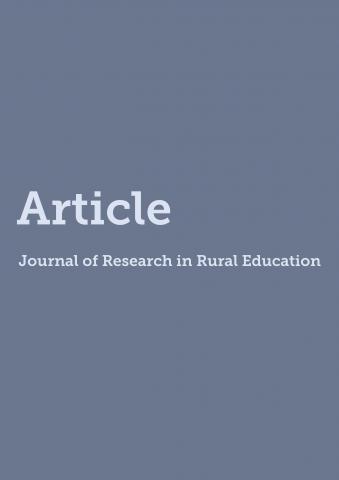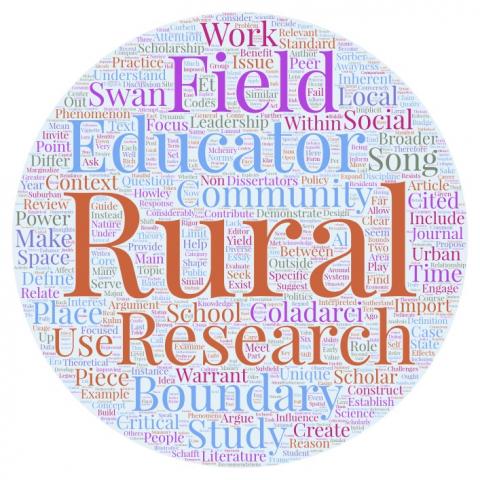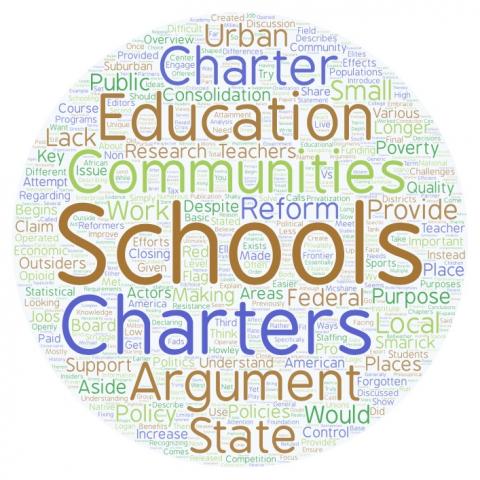Search Articles

book

book

book
This theoretical essay critically examines the impact of Coladarci’s 2007 article, “Improving the Yield of Rural Education Research: An Editor’s Swan Song,” which he composed at the conclusion of his tenure as editor of the Journal of Research in Rural Education. Using boundary theory and “awayness” as a metaphor for understanding community in social science research, we use citation analysis to review the ways in which Coladarci’s work has been taken up by the field, illustrating the ways in which this piece serves to socialize new researchers to rural education research. We then take up Coladarci’s invitation to further discuss what might define a contribution to the field of rural education scholarship and propose several additional considerations, including analyses of how power manifests across space and the criticality of a topic to rural schools and communities.

book

book
Book review of “McShane, M. Q., & Smarick, A. (2015). No Longer Forgotten: The triumphs and struggles of rural education in America. Lanham, MD: Rowman and Littlefield. Journal of Research in Rural Education, 35(8), 1-5. Retrieved from: https://doi.org/10.26209/jrre3508

book
Recent media reporting and research suggest that regional comprehensive universities (RCUs) and other postsecondary institutions may play an integral role in the welfare of rural regions, yet empirical research on the regional service of rural postsecondary institutions is limited. The purpose of this study was to examine how a single RCU serves its rural, Appalachian region. Guided by case study methods, this study used a theoretical framework consisting of community capitals theory and the anchor institution framework. After analysis of interview, documentary, governmental, and observational data, the case study resulted in a rich description of the RCU’s regional service. Our findings demonstrate the RCU’s role as an anchor institution as it expended resources to grow, invest in, and leverage rural community capitals. The university’s most significant focus as an anchor institution was on leveraging and increasing human capital through investing in education, workforce development, and public health. These findings point to several implications and policy recommendations to better support the anchor institution role RCUs play in rural regions.

book

book
The number of deaths caused by the use of heroin or prescription pain killers nationwide has increased annually over the past decade with some of the most rapid growth occurring in the nation’s most rural areas. This qualitative study examines the responses of districts and superintendents to this growing health crisis in twelve rural school districts in western Pennsylvania, an area heavily affected by the recent opioid epidemic. I analyze how superintendents in these districts worked with their local school boards and communities to develop district programming to address local opioid misuse and addiction. I find that the capacity of superintendents to respond to the opioid crisis in their districts was at times limited by local perspectives of place and drug addiction, which justified limited support for district efforts to target this crisis. This research, however, also finds that the capacity of educational leaders to respond to this crisis expanded when community perspectives changed, typically after a community incident that stirred public support for responses to this crisis. However, despite these constraints or supports for leadership action, district responses to this crisis largely predicated on the ability of superintendents to successfully act on and within their unique zone of tolerance.

book
In the current study, we examined factors that influence rural West Virginia high school students’ college attendance decisions. Using Bronfenbrenner’s ecological systems theory of human development as a theoretical basis, we studied direct and indirect influences of environmental factors upon the academic aspirations of rural Appalachian youth. Individual adolescent characteristics; family, peer, and school contexts; and broader cultural influences were all implicated in predicting rural Appalachian students’ academic aspirations. In addition, interesting differences emerged in patterns of prediction for males and females. Family and peer contexts emerged as more salient predictors of college aspirations for males, while variables associated with individual academic preparation and external barriers to college attendance were most salient for females. Considerations of cultural and economic conditions fairly unique to rural Appalachia and implications of the results for educators and policymakers working with Appalachian youth are discussed.
